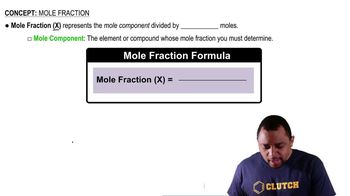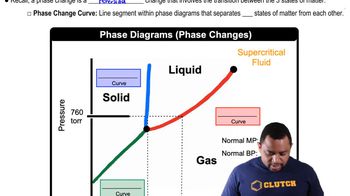Here are the essential concepts you must grasp in order to answer the question correctly.
Mole Fraction
Mole fraction is a way of expressing the concentration of a component in a mixture. It is defined as the ratio of the number of moles of a specific component to the total number of moles of all components in the mixture. This dimensionless quantity is useful in calculations involving gas laws and colligative properties, as it provides a clear representation of the relative amounts of substances present.
Recommended video:
Raoult's Law
Raoult's Law states that the partial vapor pressure of each component in a liquid mixture is equal to the vapor pressure of the pure component multiplied by its mole fraction in the liquid phase. This law is fundamental in understanding how mixtures behave during phase changes, such as evaporation, and is essential for calculating the vapor composition from the liquid composition.
Recommended video:
Raoult's Law and Vapor Pressure
Phase Equilibrium
Phase equilibrium refers to the state in which the rates of the forward and reverse processes of a phase change are equal, resulting in no net change in the amounts of each phase. In the context of mixtures, this concept is crucial for understanding how the composition of a liquid phase relates to that of the vapor phase at a given temperature, particularly when applying Raoult's Law to determine mole fractions in both phases.
Recommended video:
Phase Changes in Diagrams




